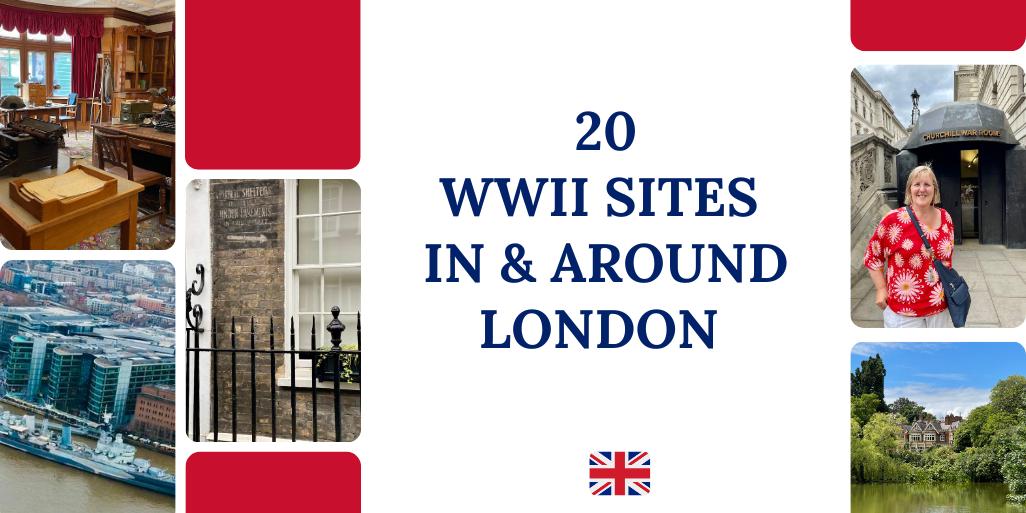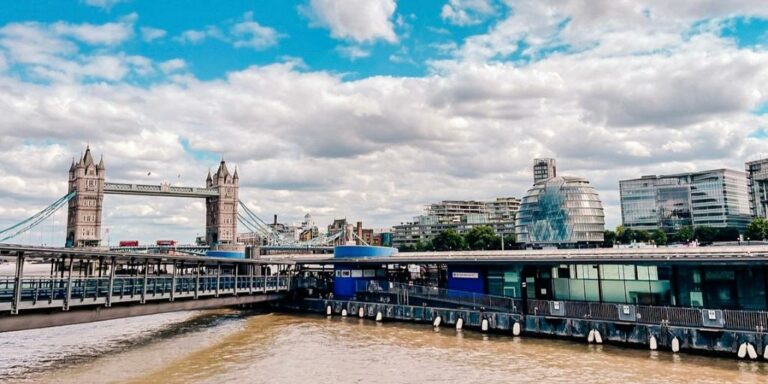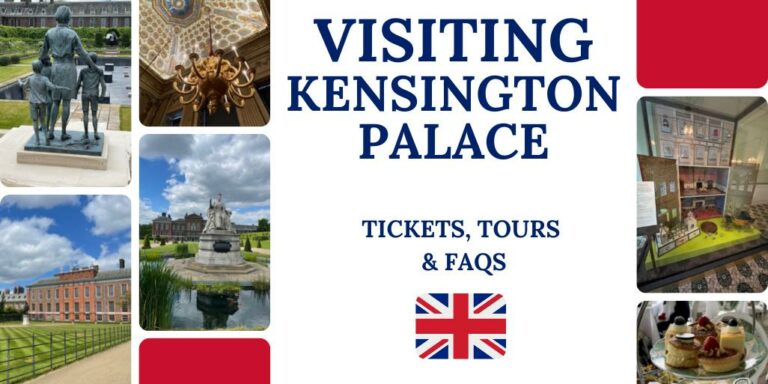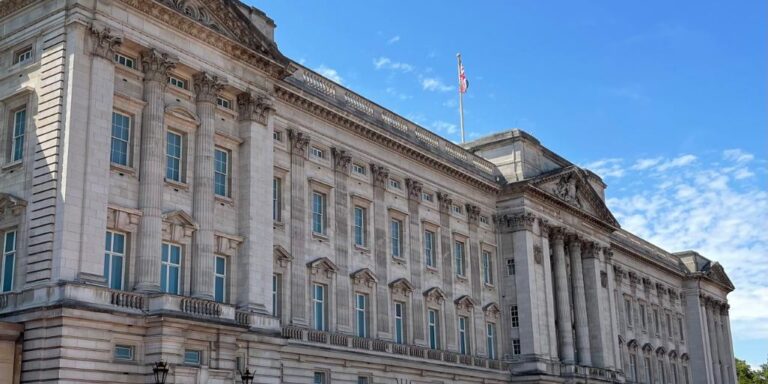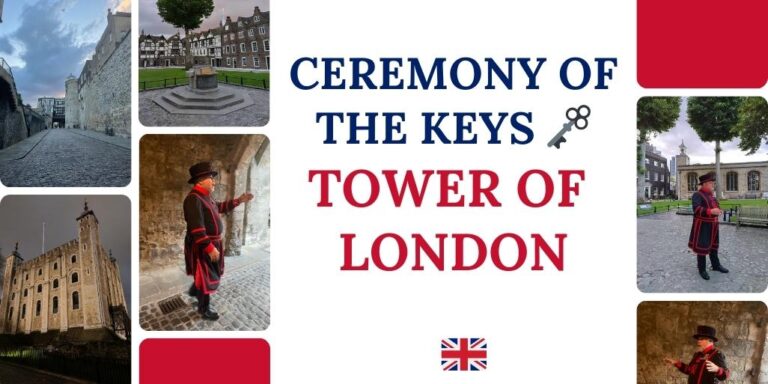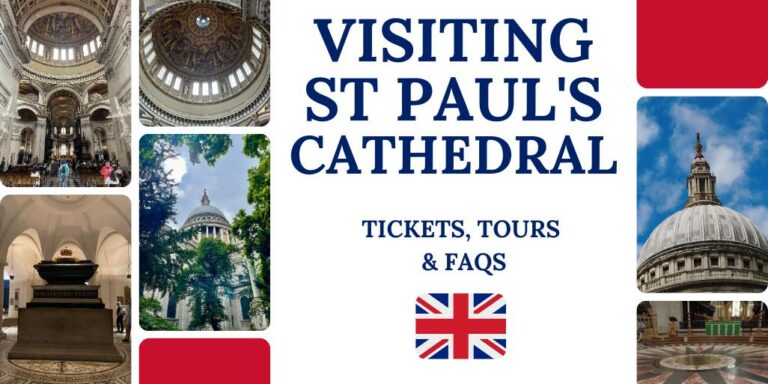21 Best WWII Sites in London [+ surrounds]
If you want to delve into the history of the Second World War in London while you’re there, you’ll be spoiled for choice. The UK takes its war heritage very seriously, and has great pride in the fact that the Allies managed to conquer their enemies in 1945.
Children and adults alike can learn all about WWII in and around London by visiting a number of carefully selected sites. In the city itself there are three major places run by the Imperial War Museum, namely HMS Belfast, the Churchill War Rooms, and the museum itself.
If you’d like to take a break from the city for the day, then Bletchley Park in Milton Keynes, to the north of London, is also worth a visit for its role in wartime code breaking. Alternatively, head southeast to Kent, where you’ll find Chartwell, the former home of Winston Churchill, set among 80 acres of grounds.
You can also experience what life was like during the Blitz by touring one of London’s disused tube stations. Both Aldwych and Down Street haven’t been used for many years, but offer a glimpse of what it was like to take cover underground while bombs rained down on the capital.
If you have even the remotest interest in war history, then we guarantee you’ll find all of the following are fascinating places to visit. From the Imperial War Museum London to a warship, an underground base, the Prime Minister’s country home, British code breaking HQ and more, here are the 20 best World War II sites in and around London.
Also included in this list are 13 lesser known World War II statues, monuments, and sites across the city. Which will you be looking out for?
🏆 Recommended tour
Private London WWII Tour – Imperial War Museum & Churchills War Rooms with LivTours
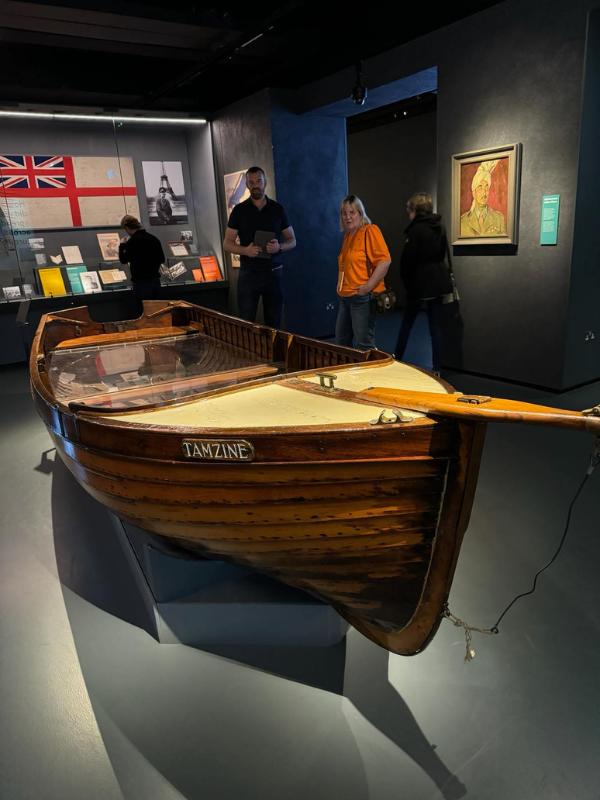
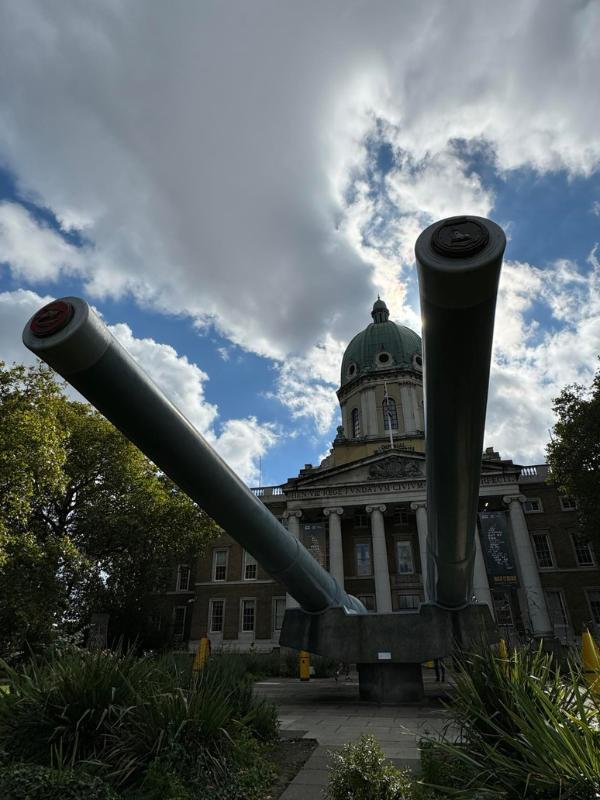
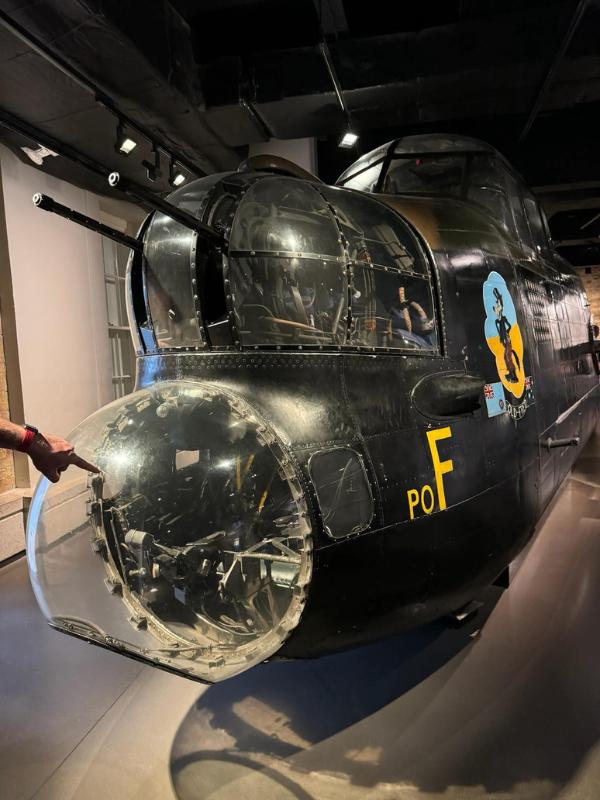
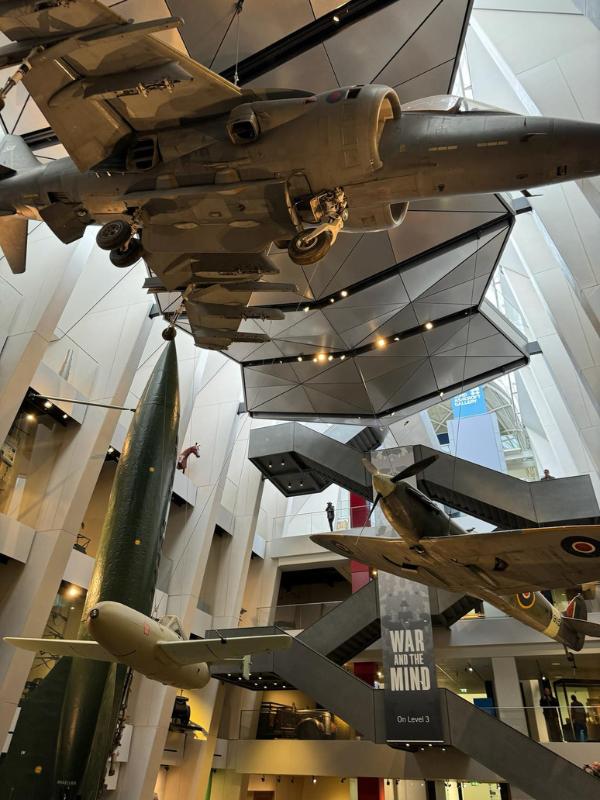
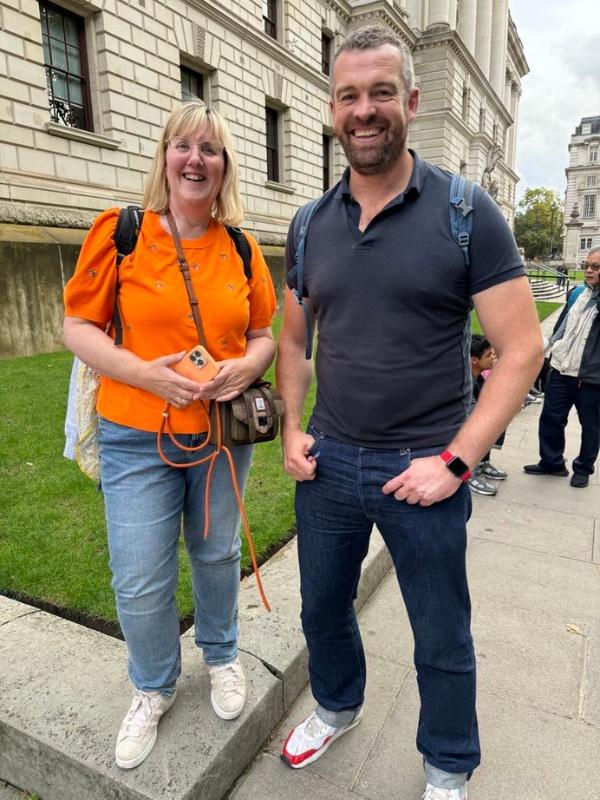
Doug and I had an incredible experience on this private WWII tour with our fantastic guide, Andy. Check out some of the photos from the day above.
I can’t recommend this tour enough for anyone interested in WW11 history.
Here’s what we did:
We started with a fascinating tour of the Imperial War Museum (this was my first visit), and we toured the WW1, WW2 and Holocaust galleries. Andy answered all our questions and explained much about the wars we didn’t know.
We then visited the Churchill War Rooms, where we explored the underground headquarters used by Winston Churchill during the war. It was surreal to see the very place where key decisions were made during such a critical time in history.
✨ Highlights:
- Personal attention from our expert private guide Andy
- Incredible exhibits at the Imperial War Museum
- Insightful stories of the Holocaust, the Blitz, and wartime London
- Touring Churchill’s secret bunker, where the war effort was directed
If you’re a history buff or just want a deeper understanding of London during WWII, this tour is a must!
Click here for further information and to book this exceptional tour.
3 of the Best WWII Sites in London
Churchill War Rooms
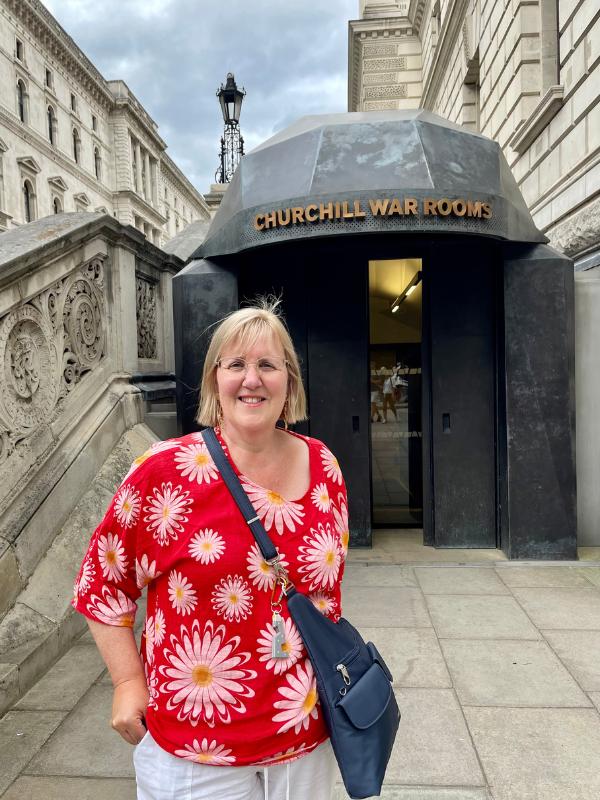
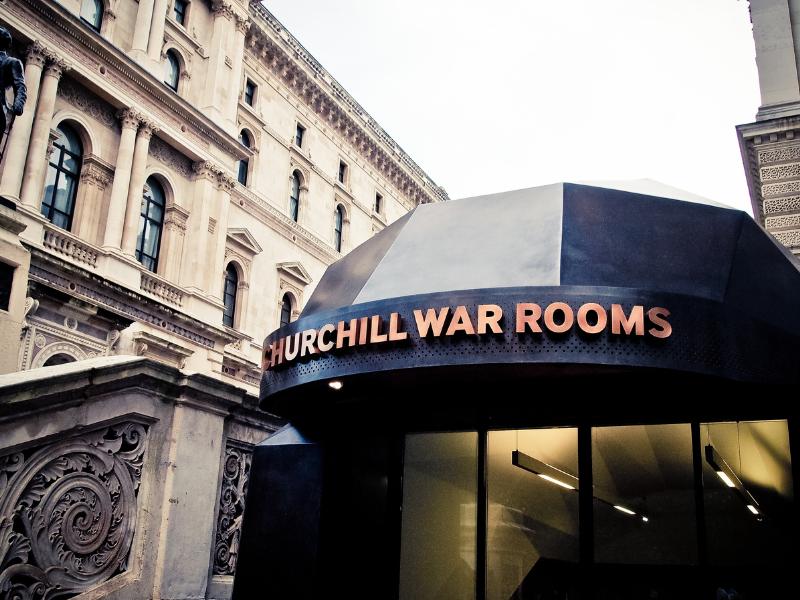
- Closest tube: St James’s Park or Westminster
- Where: Clive Steps, King Charles Street, SW1A 2AQ
- When: 9.30am to 6pm daily
- How long: 2 hours +
- Why: Underground nerve centre for the UK government’s World War II efforts
The Churchill War Rooms are right in the centre of London – and were also central to the UK’s World War 2 efforts. Operated by the Imperial War Museum, the subterranean Churchill War Rooms were where the UK government, led by Churchill, directed their campaign from.
There’s a number of permanent galleries to visit, including the cabinet and map rooms, and Churchill’s bedroom. You can also see the toilet that secretly served as a Transatlantic Telephone Room, and the original door to number 10 Downing Street.
Click here to book a Westminster WWII tour + Churchill War Rooms ticket
Imperial War Museum London

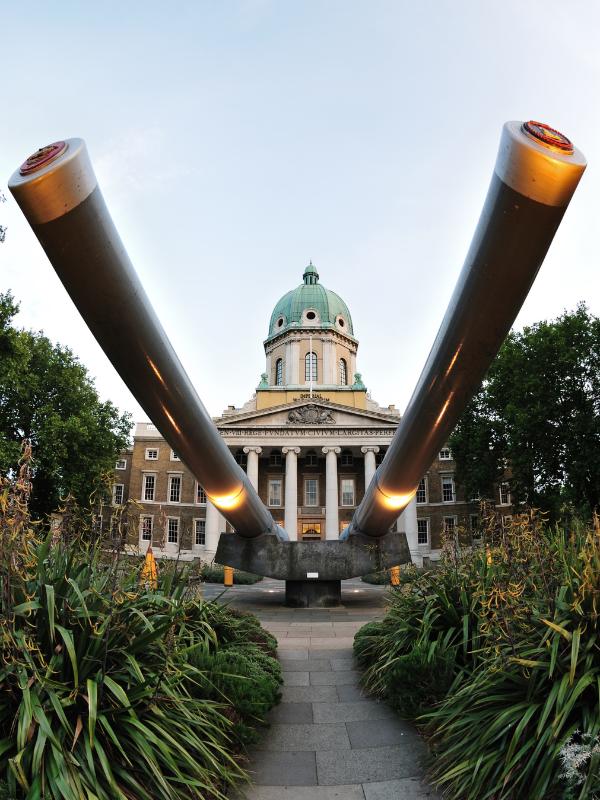
- Closest tube: Lambeth North
- Where: Lambeth Road, SE1 6HZ
- When: 10am to 6pm daily
- How long: 2 hours +
- Why: Free museum including the Second World War and Holocaust Galleries
This WWII museum in London is one of four – there are others in Manchester, Cambridgeshire, and Belfast. It’s a great introduction to the UK’s war history, including, of course, World War II. The museum is designed to share the stories of those with lived experience of the war.
Whether you want to see a picture of HMS London in WWII or visit the haunting Holocaust Galleries, you can find it here. Exhibits include personal letters written by soldiers, documents, photos, uniforms, weapons, and even vehicles. The museum is free to enter, and you don’t need to book a ticket in advance.
HMS Belfast
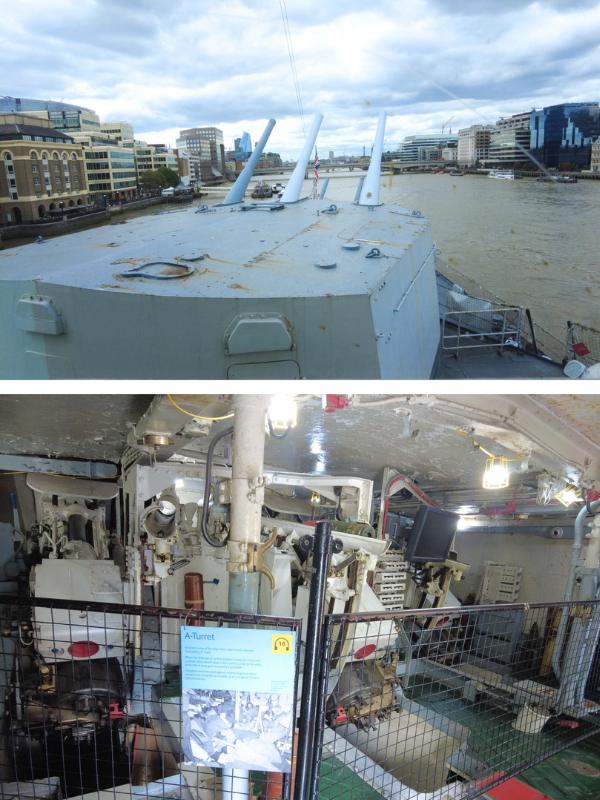
- Closest tube: London Bridge
- Where: The Queen’s Walk, SE1 2JH
- When: 10am to 6pm daily
- How long: 3 hours +
- Why: 9 level warship on the Thames for the whole family to explore
HMS Belfast is also operated by the Imperial War Museum. With nine decks to discover, it can keep both adults and children amused for hours. Activities are also included with your ticket during school holidays and on weekends.
You can learn all about life on board, including how the crew were kept fit, and fed, and what really went on at the lower decks. Get great views over the river and city, too, from the quarter deck and upper decks. Advance booking is recommended for HMS Belfast.
3 of the Best WWII Sites around London
Chartwell – Kent
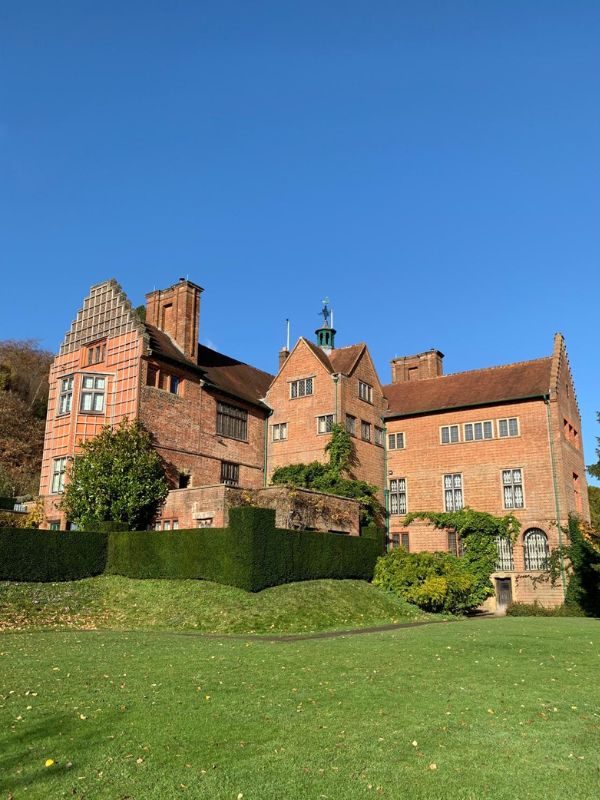
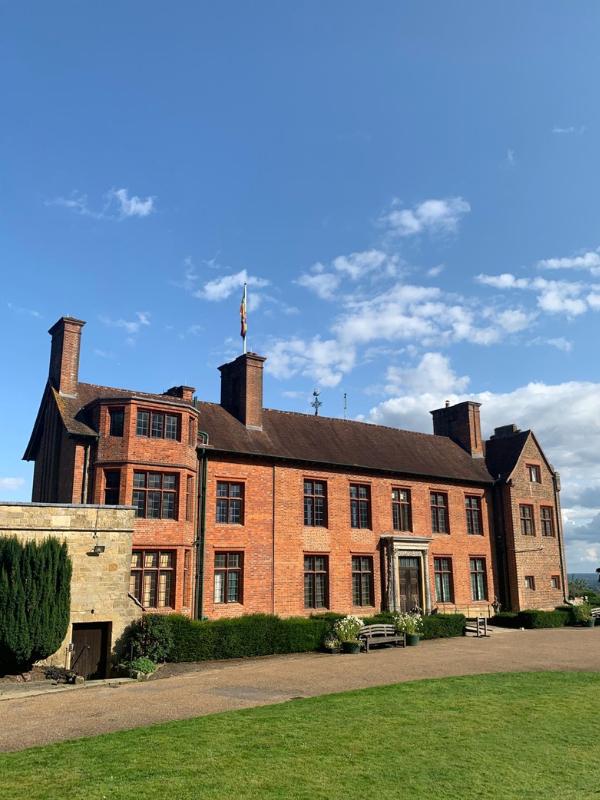
- Closest train station: Edenbridge (4 miles)
- Where: Mapleton Road, Westerham, Kent, TN16 1PS
- When: 10am to 5pm daily
- How long: 3 hours +
- Why: Winston Churchill’s home plus 80 acres of grounds, gardens, and woodland
If you feel like escaping London for the day and are into World War II or British political history, then you’re in luck. Chartwell in Kent makes a great change from the city, and offers 80 acres of grounds as well as the house to explore.
Highlights include the rose garden, designed by Lady Churchill; the walled garden with walls built by Winston himself; the studio showing his paintings; and the woodland with kids’ play equipment, and a lakeside walk. There’s also a cafe and gift shop.
Click here to book a private day tour to Chartwell
Bletchley Park – Buckinghamshire
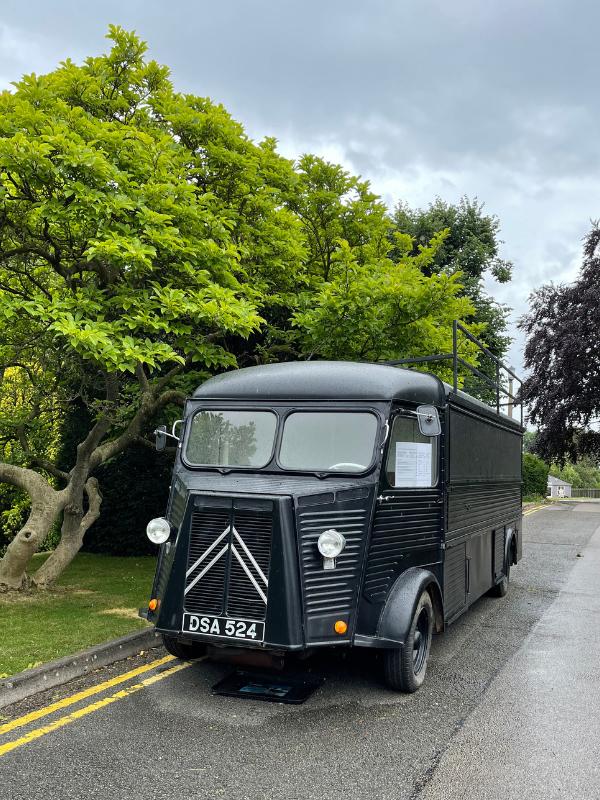
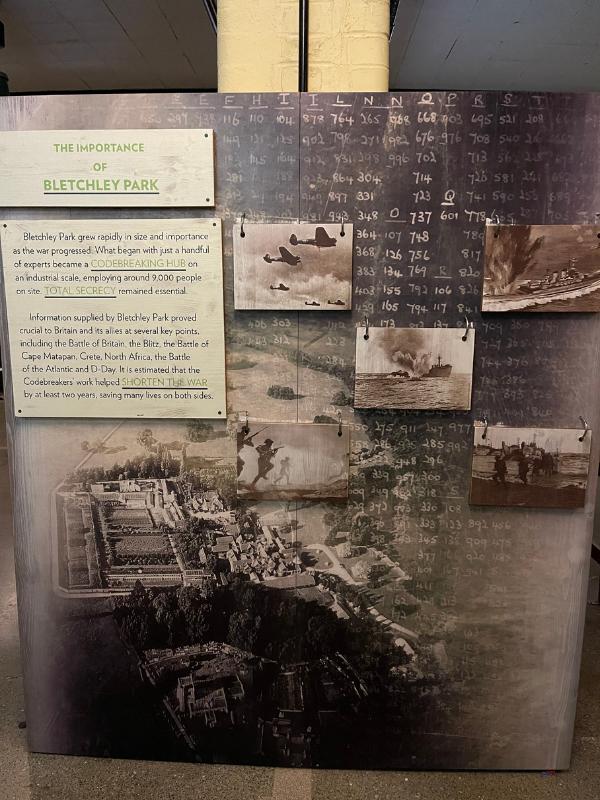
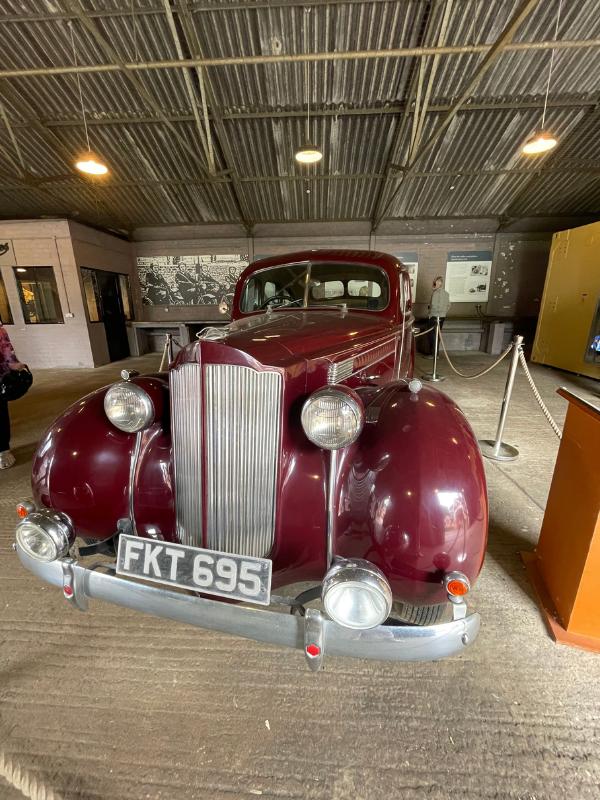
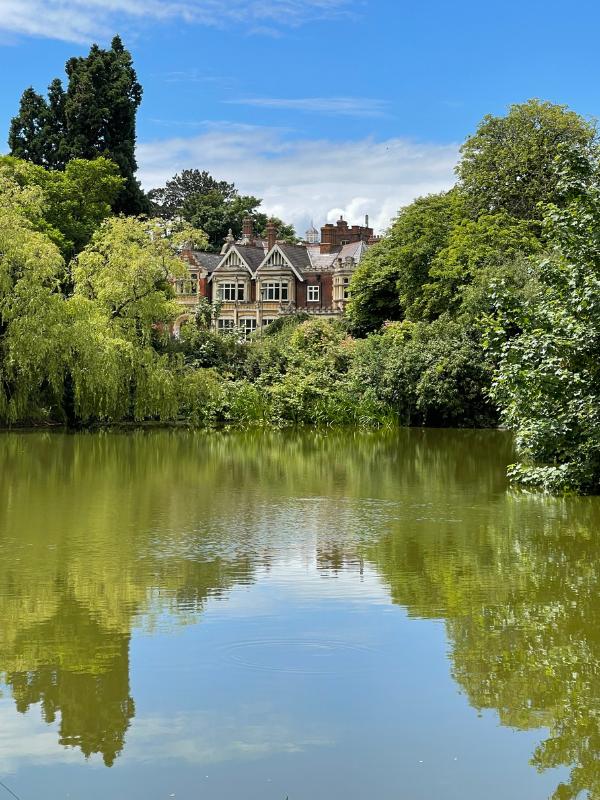
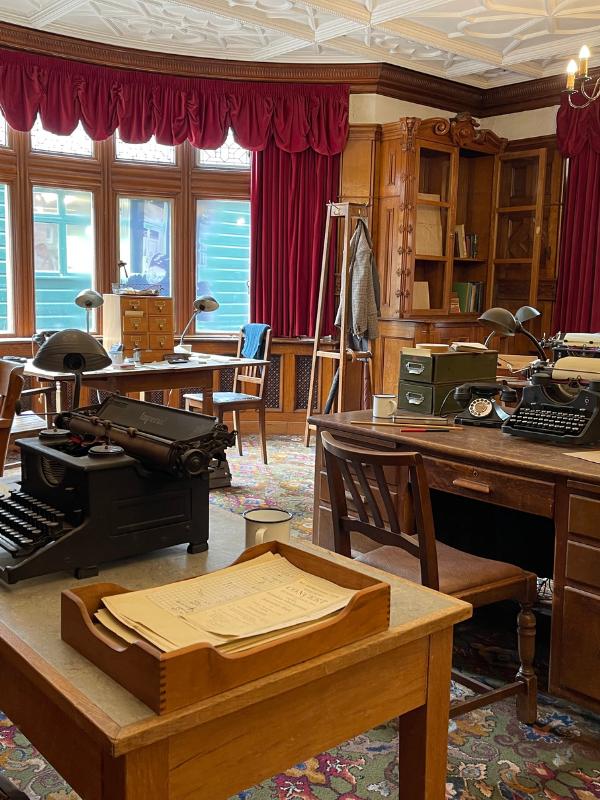
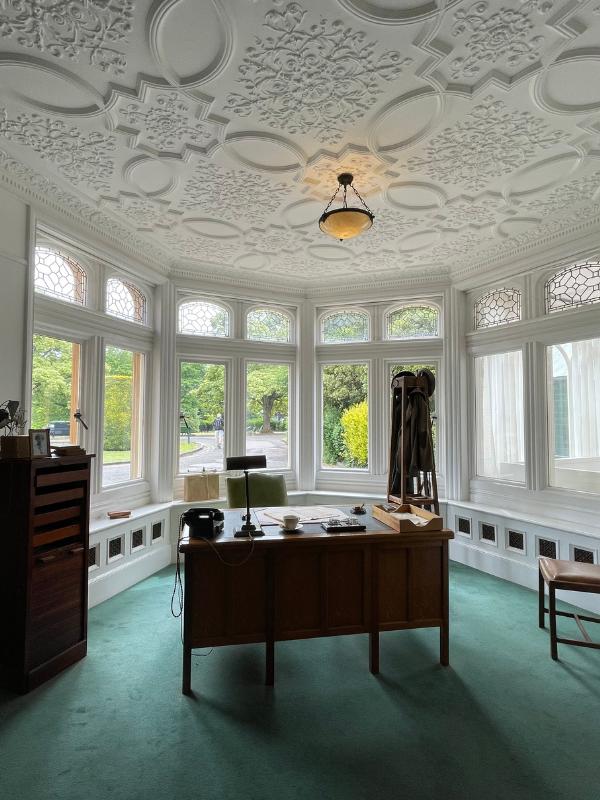
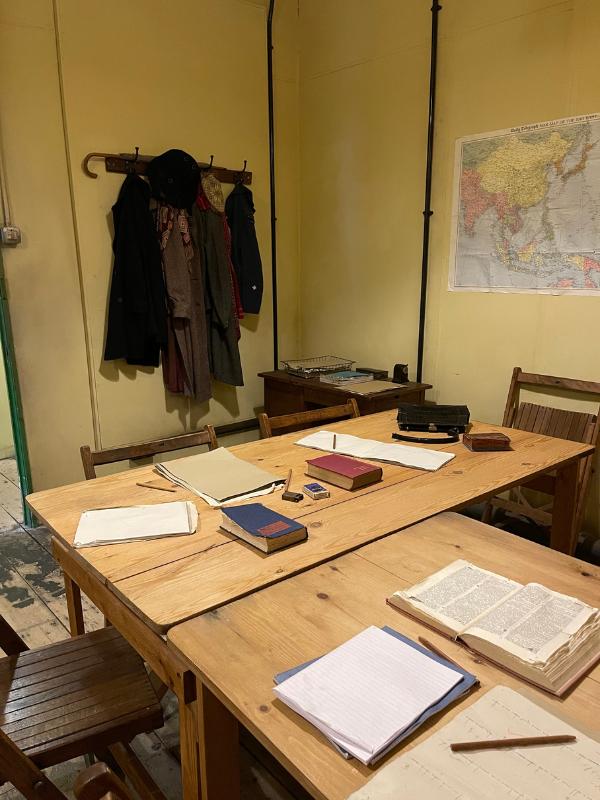
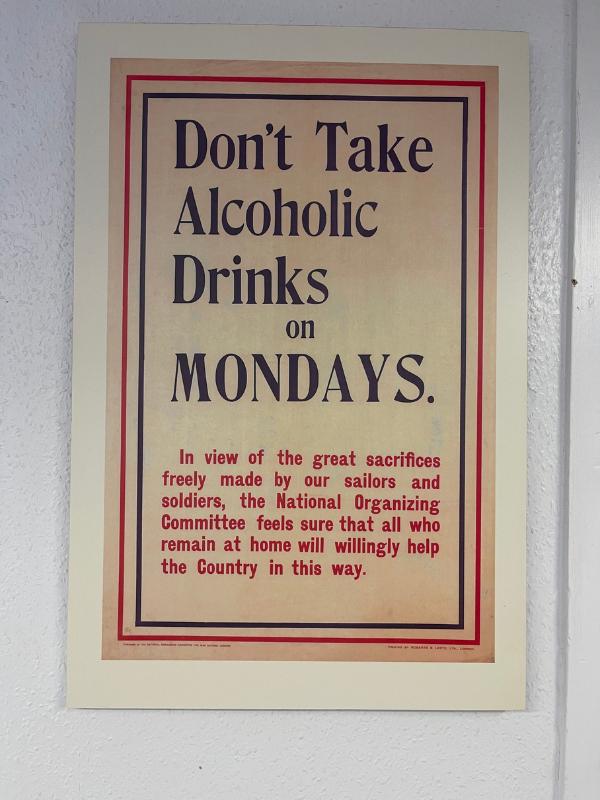
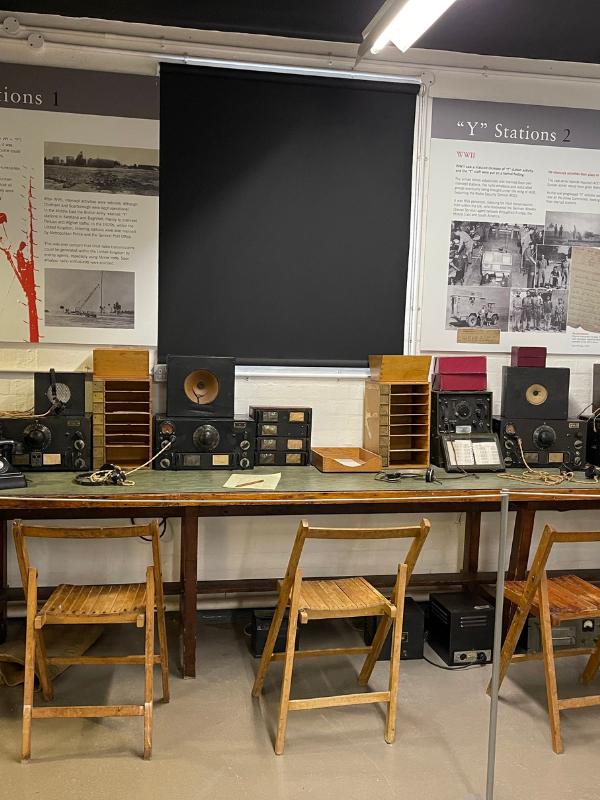
- Closest train station: Bletchley (a few minutes’ walk)
- Where: Sherwood Drive, Bletchley, Milton Keynes, MK3 6EB
- When: 9.30am to 5pm daily
- How long: 4 hours +
- Why: Where the British code breakers of World War II were based
If you want to know all about code breaking during the Second World War, there’s no better place to be than Bletchley. As the local train station is only a few minutes away on foot, it’s also easy to get to by public transport. Allow four hours or more, as there’s a lot to see and do.
The buildings have been fully restored to their former glory, and feature recreated rooms that were significant during World War II. This lovely heritage attraction also offers interactive displays, immersive footage, and numerous exhibits showing how important Bletchey’s role really was.
Click here to book a private day tour to Bletchley Park
Battle of Britain Bunker
Experience a unique glimpse into history with a visit to the 1940s Bunker, but keep in mind that the only way to explore this fascinating site is by joining one of the scheduled tours. We strongly recommend booking in advance to secure your spot, as tours are limited and often fill up quickly. Tours are punctual, so it’s important to arrive on time.
The one-hour tour includes a descent down 76 steps to the original 1940s Bunker, where you’ll enjoy a presentation in the plotting room. Please note that the Bunker may not be suitable for those with reduced mobility due to the lack of a lift. After the tour, you’ll have the opportunity to explore the exhibition, which features a new soundscape and detailed exhibits about the Bunker’s history.
If you prefer, you can visit the exhibition only, which currently includes a free virtual video tour of the Bunker, the new Polish Air Force gallery, and the Dieppe exhibition. The Air Defence Exhibition, housed in a 2,000 square metre complex over two levels, delves into the central themes of flight and aeroplanes. The exhibition features state-of-the-art museum displays and a 90-seat auditorium, where visitors can virtually access the 1940s Bunker.
The Visitor Centre closes at 16:30, so if you’re booked on the last tour of the day, particularly on weekends, plan to explore the Visitor Centre beforehand. Note that filming inside the Bunker is not permitted, ensuring the preservation of this important historical site.
Whether you’re a history enthusiast or simply curious, the Bunker tour and Air Defence Exhibition offer a captivating and educational experience.
Open daily from 10:00 to 16:30, with the last admission at 15:30.
The exhibition and Visitor Centre are wheelchair accessible, with a lift and ramp access. Accessible parking spaces are available near the main entrance, and assistance dogs are welcome.
Getting there
- By Tube: The nearest station is Uxbridge (Metropolitan and Piccadilly lines). Follow the blue tourist signs through Dowding Park, about a 1-mile walk. Taxis are also available at Uxbridge.
- By Bus: Various bus routes stop near the site, including the A10, U3, 427, U1, U4, U7, and U2. Check routes at www.tfl.gov.uk/plan-a-journey.
- By Car: Free parking is available for museum visitors. Use postcode UB10 0GG for satnav or search for “Battle of Britain Bunker.” Please note, the area is within the ULEZ zone.
2 of the Best Closed Tube Station Tours
Aldwych closed tube station tour
You can also take WWII London tours at tube stations that have fallen into disuse. A prime example is Aldwych, which closed in 1994.
So what’s that got to do with World War Two, we hear you cry? Well, the stations were used as underground shelters during the Blitz. Touring a station no longer in use recreates the atmosphere, and you can imagine cowering down here as bombs rained down on buildings and people above ground.
Aldwych is also notable because it’s starred in various TV programmes and films. The unused underground station has played a role in more than 20 productions. Otherwise, it’s rarely seen by the public, giving tours an exclusive feel.
This small group tour lasts for an hour-and-a-quarter. During that time, your guide will show you the original lifts, ticket office, platforms, and walkways. You’ll also learn about the station’s role in movies like Atonement, The Krays, Patriot Games, Mr Selfridge, Sherlock, Superman IV, 28 Weeks Later, and more.
Click here to book this Aldwych closed tube station tour
Down Street closed tube station tour
Deep beneath the exclusive London enclave of Mayfair is the disused tube station of Down Street. One of London’s “ghost” underground stations is concealed in the spaces between Piccadilly Line tracks still in use.
The World War II connection here is that this station located between Green Park and Hyde Park Corner stations was used as a bomb-proof base for the British Railway Executive Committee.
Down Street station was only in use from 1907 to 1932, and Winston Churchill himself once hid in the narrow tunnels here at the height of the Blitz. The railways of the UK were also coordinated from these makeshift subterranean headquarters.
These Hidden London tours are created in partnership with the London Transport Museum. Their archives, collections, and experts have been used to put together these compelling tours. A public vote for the Tiqets’ Remarkable Venue Awards in 2022 named them as the “Best Hidden Gem in the World,” no less.
The tour lasts for 90 minutes, and you should know that it involves descending and ascending 123 steps. There’s also uneven ground, and poorly lit areas.
Click here to book this Hidden London Down Street station tour
13 Other World War II Sites in London
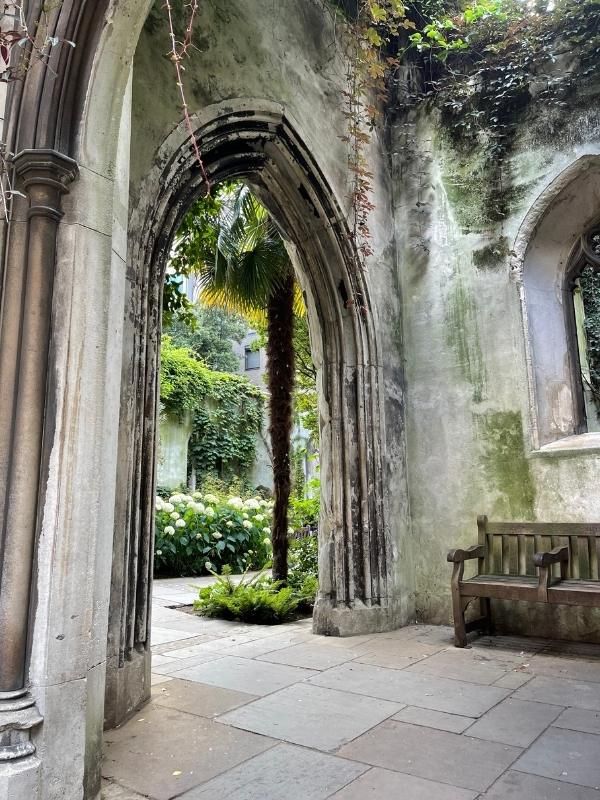
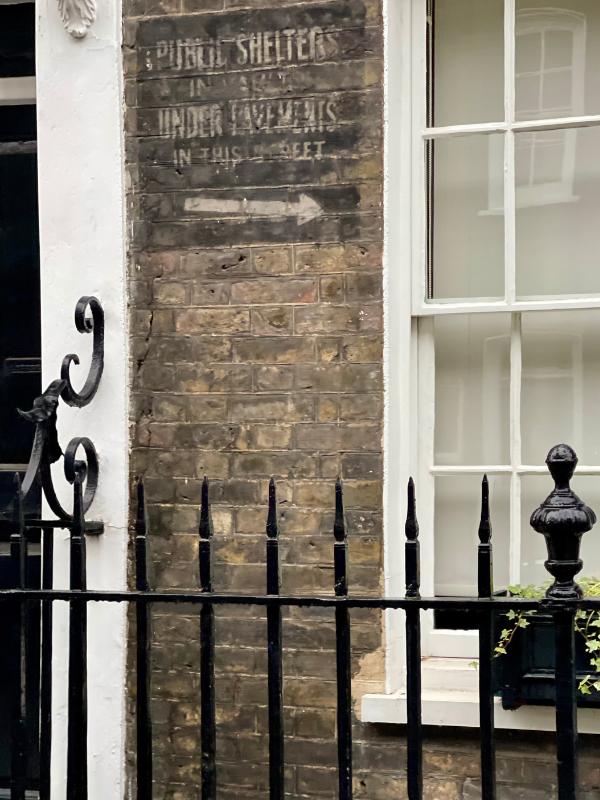
If all that’s not enough, here are the brief details of 13 more unique sites in London, each of which has a significant World War II connection.
Allies Sculpture
New Bond Street bronze sculpture of Winston Churchill and Teddy Roosevelt, marking the special relationship between the US and UK leaders.
Christchurch Greyfriars Church Garden
Lovely garden close to St Paul’s Cathedral, set around the ruins of a church bombed in the Blitz.
Du Cane Court
Miraculously unbombed art deco building in Balham rumoured to have been chosen by Hitler as a future SS headquarters.
Monument to the Women of World War II
Sculpture representing 7 million women who contributed to the war effort, located in Whitehall by the cenotaph.
Smith Square World War II Ghost Sign
Faded sign in Westminster saying “Public shelters in vaults under pavements in this street.”
SOE Monument
Blackened bronze bust devoted to those secret agents involved in anti-Nazi operations.
St Dunstan-in-the-East
A lovely public garden set in the grounds of a church destroyed in 1941 by the Blitz.
St Leonards Air Raid Shelter
Little round entrance to a bomb shelter at St Leonards Court in Mortlake, southwest London.
Stoke Newington Town Hall
Grade II listed 1930s building in North London bearing traces of World War II camouflage.
Stretcher Railings
Wartime stretchers repurposed as railings by Becket House, near Borough tube station.
V-2 Rocket Memorial
Stone monument where the first V-2 rocket fell on London in Staveley Road, Chiswick.
V&A Museum
The front of the Victoria & Albert Museum in South Kensington bears battle scars from the Blitz.
Vincent Street Fireplace
Fireplace that survived the Blitz set into a red brick wall on Vincent Street in Westminster.
Which London World War II Sites Will You Seek Out?
From sites you can spot while exploring the city to a full day trip out of London, there’s lots here to occupy those with more than a passing interest in World War II.
Whether you enter the Imperial War Museum for free, discover HMS Belfast, or take a private car trip to Bletchley Park in Buckinghamshire, these places hold plenty of appeal for anyone who’s into military history.

